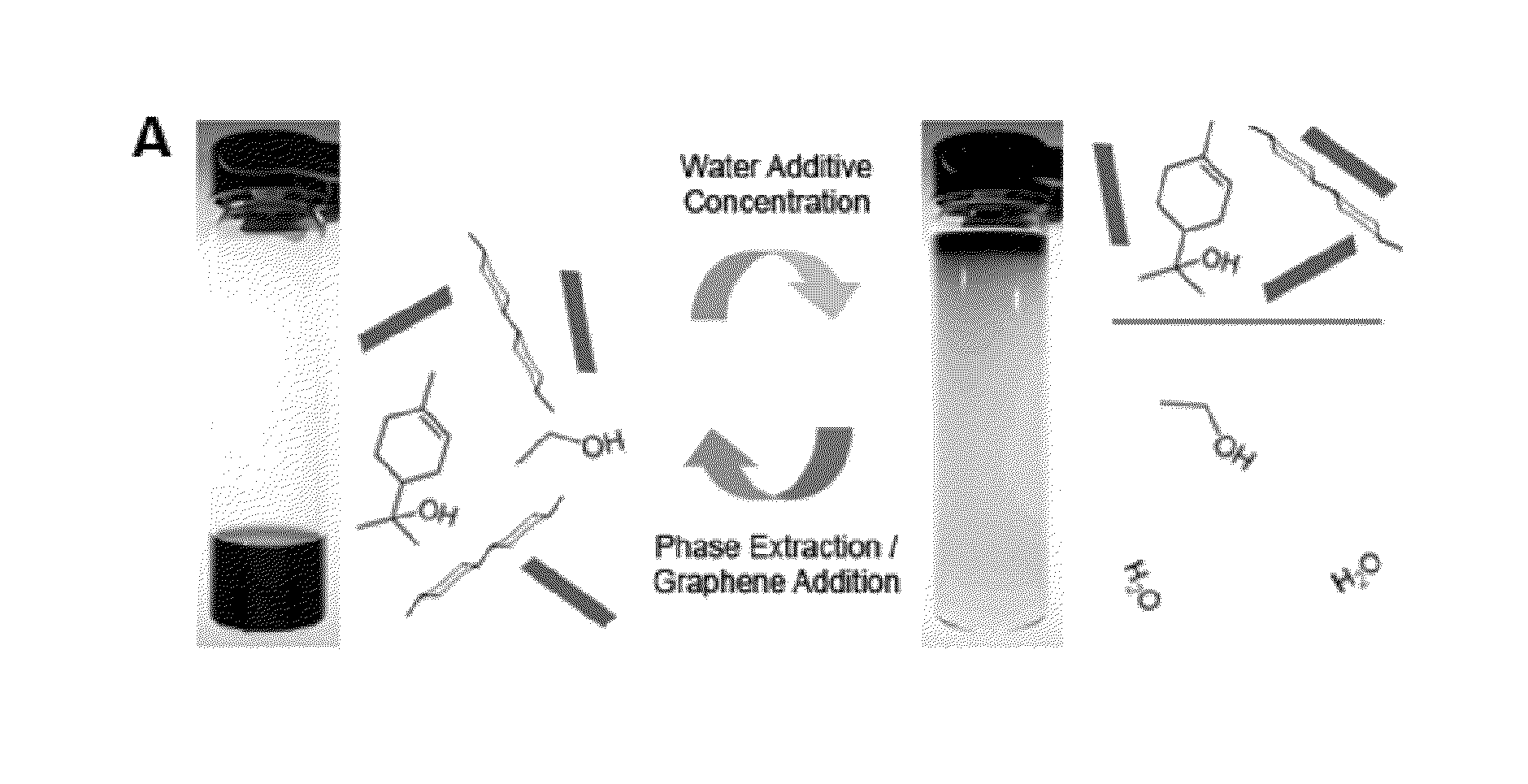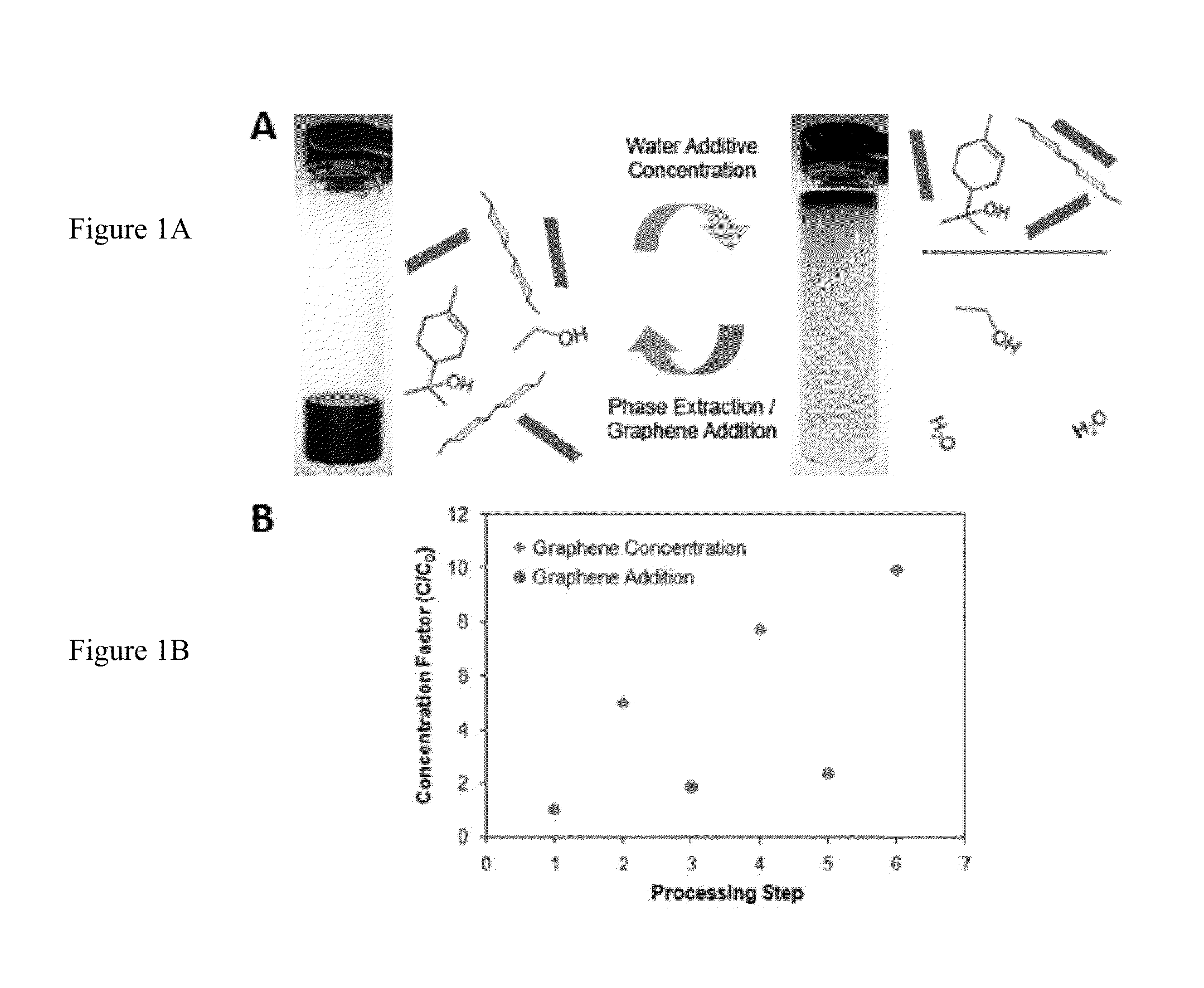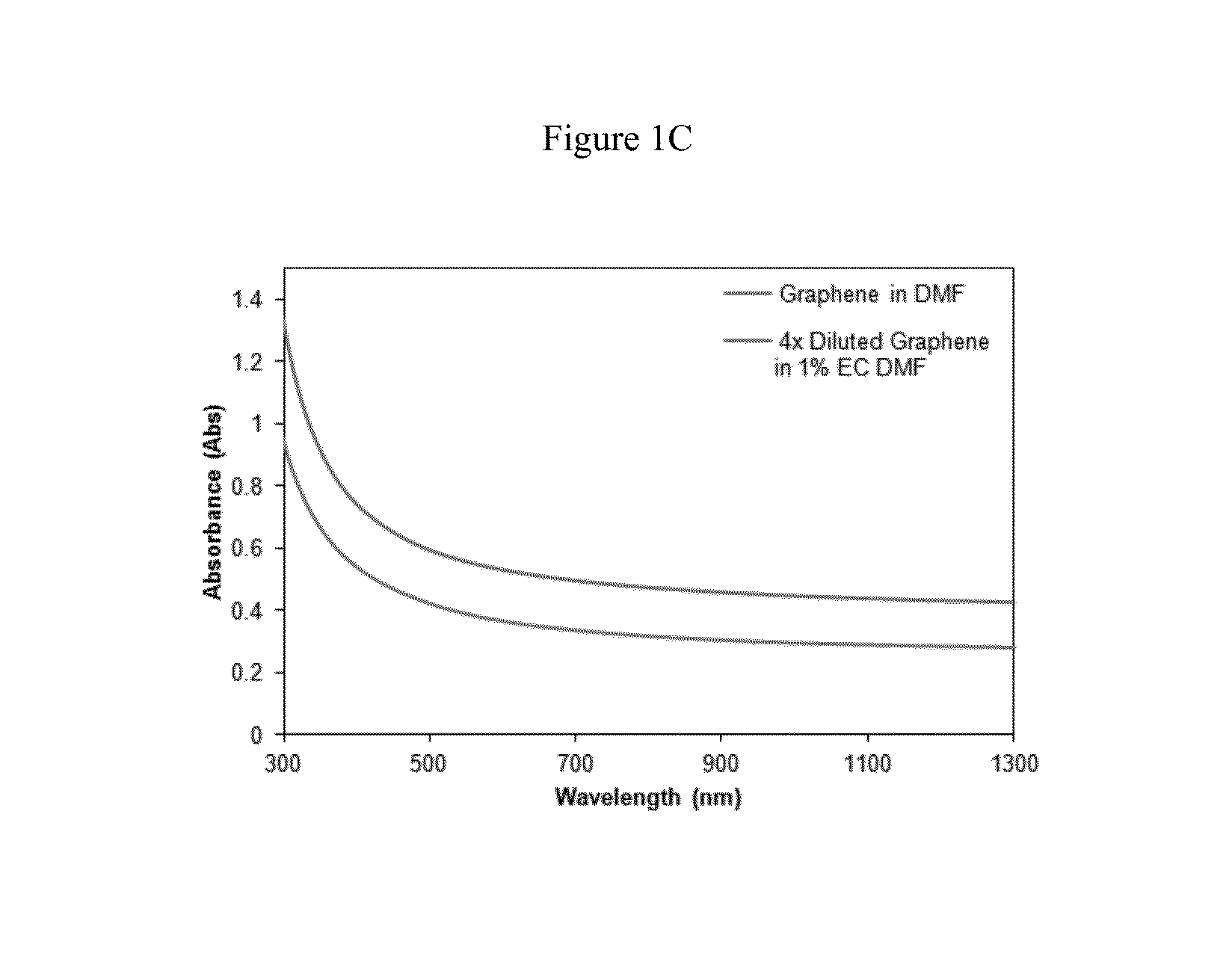Methods for preparation of concentrated graphene compositions and related composite materials
- Summary
- Abstract
- Description
- Claims
- Application Information
AI Technical Summary
Benefits of technology
Problems solved by technology
Method used
Image
Examples
example 1a
Exfoliation and Sedimentation Processing of Graphene
[0038]2.5 g of natural graphite flake (3061 grade, Asbury Graphite Mills) was added to 50 mL of 1% w / v ethyl cellulose (EC) (Aldrich) ethanol (EtOH) solution inside a plastic 50 mL centrifuge tube (note that Aldrich does not explicitly provide the molecular weight of its EC; rather, the viscosity is specified (e.g., 4 cP) when the EC is loaded at 5% w / v in 80:20 toluene:ethanol). Two tubes containing this mixture were simultaneously sonicated in a Bransonic 3510 tabletop ultrasonic cleaner for 3 hr at 40 kHz and 100 W. In order to efficiently sediment out the graphite flakes, the centrifugation was performed in a two-step process. First, the sonicated graphene dispersions were centrifuged in a large volume centrifuge (Beckman Coulter Avanti J-26 XP Centrifuge) for 10 min at 7,500 rpm to remove the fast sedimenting graphite flakes. The supernatant was then decanted from each 50 mL centrifuge tube and combined. A second sedimentation...
example 1b
Thermal Stability of Polymer Enhanced Graphene Dispersions
[0039]Experiments were undertaken to highlight the thermal stability of EC-based graphene dispersions, of the sort discussed above, especially in comparison to traditional surfactant-based dispersions. Here, graphene dispersions in 1% w / v EC-EtOH and 1% w / v sodium cholate-water (SC-H2O, prior art) were produced using the sonication and centrifugation procedures detailed above. Both dispersions were then concentrated to ˜1 mg / mL via thermal evaporation.
[0040]At elevated temperatures, graphene flakes in the SC-based dispersion agglomerate rapidly to form precipitates, while the EC-based dispersion remains well dispersed. To quantify their thermal stabilities, both concentrated dispersions were diluted to 0.1 mg / mL and centrifuged at 15,000 rpm for 1 min. The UV-vis absorbance spectra for their supernatants were then obtained. Using the same absorbance coefficient discussed above (2460 L / g·m at 660 nm), it was determined that 97...
example 1c
Enhanced Graphene Production Efficiency in DMF
[0041]Improvement in graphene production is also demonstrated by adding EC to dimethylformamide (DMF), which has moderate intrinsic graphene solubility. In this case, natural graphite was bath sonicated for 3 h at 50 mg / mL in both DMF and 1% w / v EC-DMF. After centrifugation at 7500 rpm for 4.5 h to remove the thick graphite flakes, UV-vis absorbance spectra were taken to assess their graphene concentrations (FIG. 1C).
[0042]Using an absorbance coefficient of 2460 L / g·m at 660 nm, the graphene concentration for the DMF and EC-DMF dispersions were determined to be 14.1 and 82.8 μg / mL, respectively. (See, Hernandez, Y.; Nicolosi, V.; Lotya, M.; Blighe, F. M.; Sun, Z.; De, S.; McGovern, I. T.; Holland, B.; Byrne, M.; Gun′Ko, Y. K.; Boland, J. J.; Niraj, P.; Duesberg, G.; Krishnamurthy, S.; Goodhue, R.; Hutchison, J.; Scardaci, V.; Ferrari, A. C.; Coleman, J. N., Nat. Nanotechnol. 2008, 3, 563-568). It follows that, the addition of 1% w / v EC t...
PUM
 Login to View More
Login to View More Abstract
Description
Claims
Application Information
 Login to View More
Login to View More - R&D
- Intellectual Property
- Life Sciences
- Materials
- Tech Scout
- Unparalleled Data Quality
- Higher Quality Content
- 60% Fewer Hallucinations
Browse by: Latest US Patents, China's latest patents, Technical Efficacy Thesaurus, Application Domain, Technology Topic, Popular Technical Reports.
© 2025 PatSnap. All rights reserved.Legal|Privacy policy|Modern Slavery Act Transparency Statement|Sitemap|About US| Contact US: help@patsnap.com



